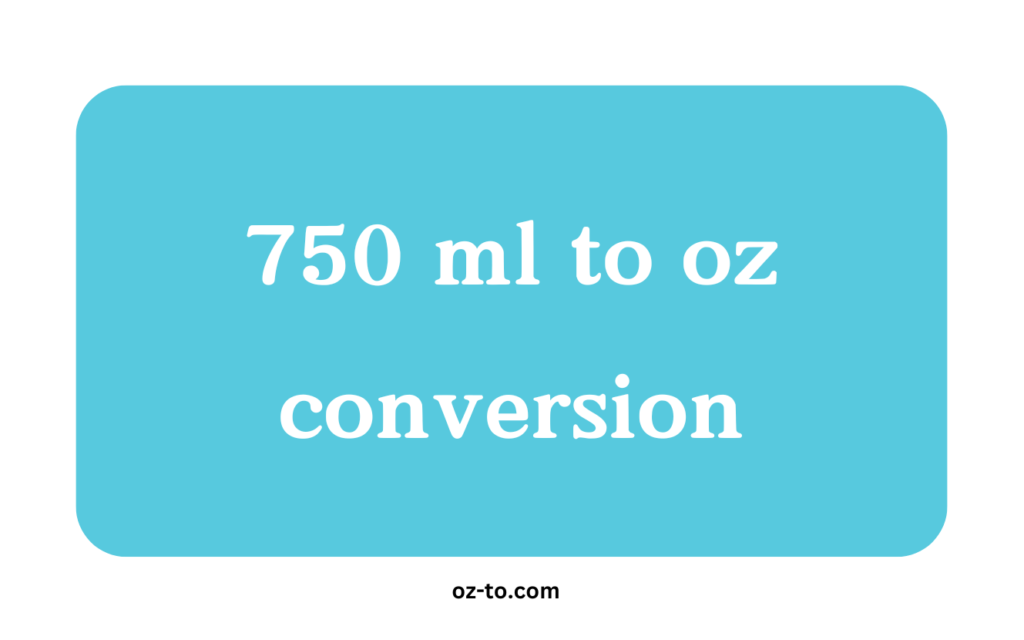Welcome to our user-friendly tool for effortlessly converting 750 ml to oz. Accurate measurement conversions play a vital role in various activities such as cooking, baking, and scientific experiments. Our tool simplifies this conversion process, allowing you to obtain precise results with ease.
Whether you’re a professional chef, home baker, scientist, or simply someone who requires accurate liquid measurements, our converter is designed to cater to your specific needs. Rest assured, our dependable tool will assist you in effortlessly achieving impeccable measurements every time.
750 ml how many Oz?
Most people commonly use either a 750 ml or a 1-liter bottle to measure alcohol quantities. Let’s focus on the 750 ml size for the moment.
Let’s consider a situation where someone asks for a margarita. To make it, you need 3 fluid ounces of tequila, which is approximately 88.71 milliliters. However, how many servings can you get from the 750ml bottle?
By dividing 750 ml by 1 fluid ounce, you can estimate around 25 servings. Therefore, you can prepare approximately 25 one-ounce drinks using that bottle.
750 Milliliters = 3.17006 Cups
750 ml Ounces Conversion Chart:
| Milliliters (ml) | Ounces (oz) |
|---|---|
| 750 | 25.3605 |
| 1500 | 50.72103 |
| 2250 | 76.08155 |
| 3000 | 101.4421 |
| 3750 | 126.8026 |
| 4500 | 152.1631 |
| 5250 | 177.5236 |
| 6000 | 202.8841 |
| 6750 | 228.2447 |
| 7500 | 253.6052 |
FAQs About 750 Milliliters to Ounces:
What’s the reason behind 750 mL being a common bottle size for wine and spirits?
750 mL has become a standard bottle size for wine and spirits due to its practicality for consumers. It offers enough volume for multiple servings while remaining easy to handle and transport.
Is 750 mL equivalent to 1 liter?
No, 750 mL is slightly less than 1 liter. A liter comprises 1000 mL, so 750 mL accounts for three-fourths (3/4) of a liter.
From where does the 750 mL bottle size originate?
The 750 mL bottle size is believed to have its roots in France during the Napoleonic era, coinciding with the establishment of the metric system. It’s thought to have evolved from the traditional wine bottle sizes prevalent in France at that time.
